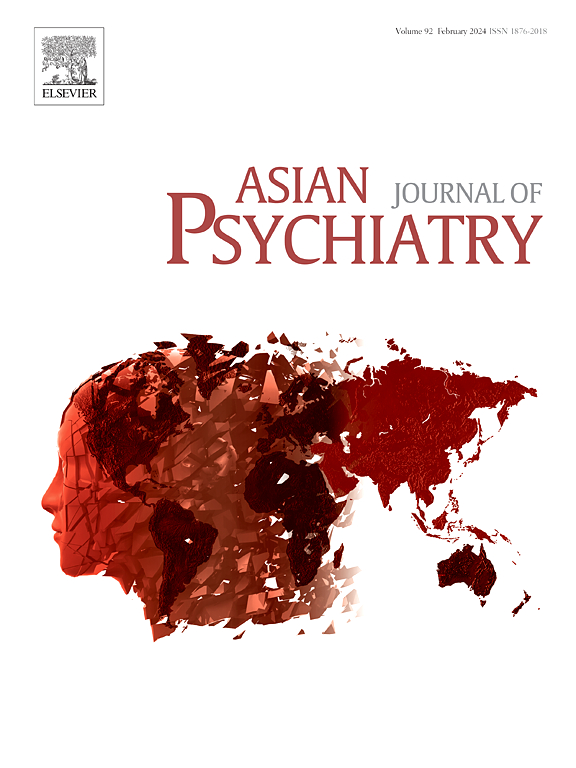DSM-5 (PCL-5) PTSD检查表的纵向心理测量验证与测量不变性
IF 4.5
4区 医学
Q1 PSYCHIATRY
引用次数: 0
摘要
尽管DSM-5采用了创伤后应激障碍(PTSD)的四因素模型,但很少有研究对DSM-5 (PCL-5)的PTSD检查表的时间稳定性进行纵向检查,特别是在东亚背景下。此外,其析因结构和有效性一直是一个相当有争议的主题,越来越多的证据表明,替代模型可能更好地捕捉创伤后应激障碍症状的异质性。为了解决这些差距,本研究在香港成人社区样本中评估了繁体中文版PCL-5 (TC-PCL-5)在三个时间点(N = 在时间1时为412,时间2时为232,时间3时为132)的心理测量特性,测试了PCL-5的四因素和六因素结构。量表的内部一致性在研究的所有三个波中保持稳定(T1:ω=0.97;T2:ω= 0.98;T3:ω= 0.98)。类内相关分析显示良好的重测信度。验证性因子分析在每个时间点支持两种析因结构。结果显示三种波的结构、度量和标量不变性,并表明潜在的因素结构、项目加载和截距随着时间的推移保持稳定,六因素结构显示出更好的拟合性。本文章由计算机程序翻译,如有差异,请以英文原文为准。
Longitudinal psychometric validation and measurement invariance of the PTSD checklist for DSM-5 (PCL-5)
Despite the adoption of the four-factor model of posttraumatic stress disorder (PTSD) in the DSM-5, very few studies have provided longitudinal examinations of the temporal stability of the PTSD Checklist for DSM-5 (PCL-5), particularly in East Asian contexts. In addition, its factorial structure and validity have been a subject of considerable debate, with accumulating evidence suggesting that alternative models may better capture the heterogeneity of PTSD symptoms. To address these gaps, the present study evaluated the psychometric properties of the Traditional Chinese version of the PCL-5 (TC-PCL-5) across three timepoints (N = 412 at Time 1, 232 at Time 2, and 132 at Time 3) in a community sample of Hong Kong adults, testing both the four- and six-factor structures of the PCL-5. Internal consistency of the scale remained stable across all three waves of the study ; ; . Intraclass correlation analyses revealed good test–retest reliability. Confirmatory factor analyses supported both factorial structures at each timepoint. Results demonstrated configural, metric, and scalar invariance across all three waves and indicated that the underlying factor structure, item loadings, and intercepts remained stable over time, with the six-factor structure showing a slightly better fit.
求助全文
通过发布文献求助,成功后即可免费获取论文全文。
去求助
来源期刊

Asian journal of psychiatry
Medicine-Psychiatry and Mental Health
CiteScore
12.70
自引率
5.30%
发文量
297
审稿时长
35 days
期刊介绍:
The Asian Journal of Psychiatry serves as a comprehensive resource for psychiatrists, mental health clinicians, neurologists, physicians, mental health students, and policymakers. Its goal is to facilitate the exchange of research findings and clinical practices between Asia and the global community. The journal focuses on psychiatric research relevant to Asia, covering preclinical, clinical, service system, and policy development topics. It also highlights the socio-cultural diversity of the region in relation to mental health.
 求助内容:
求助内容: 应助结果提醒方式:
应助结果提醒方式:


